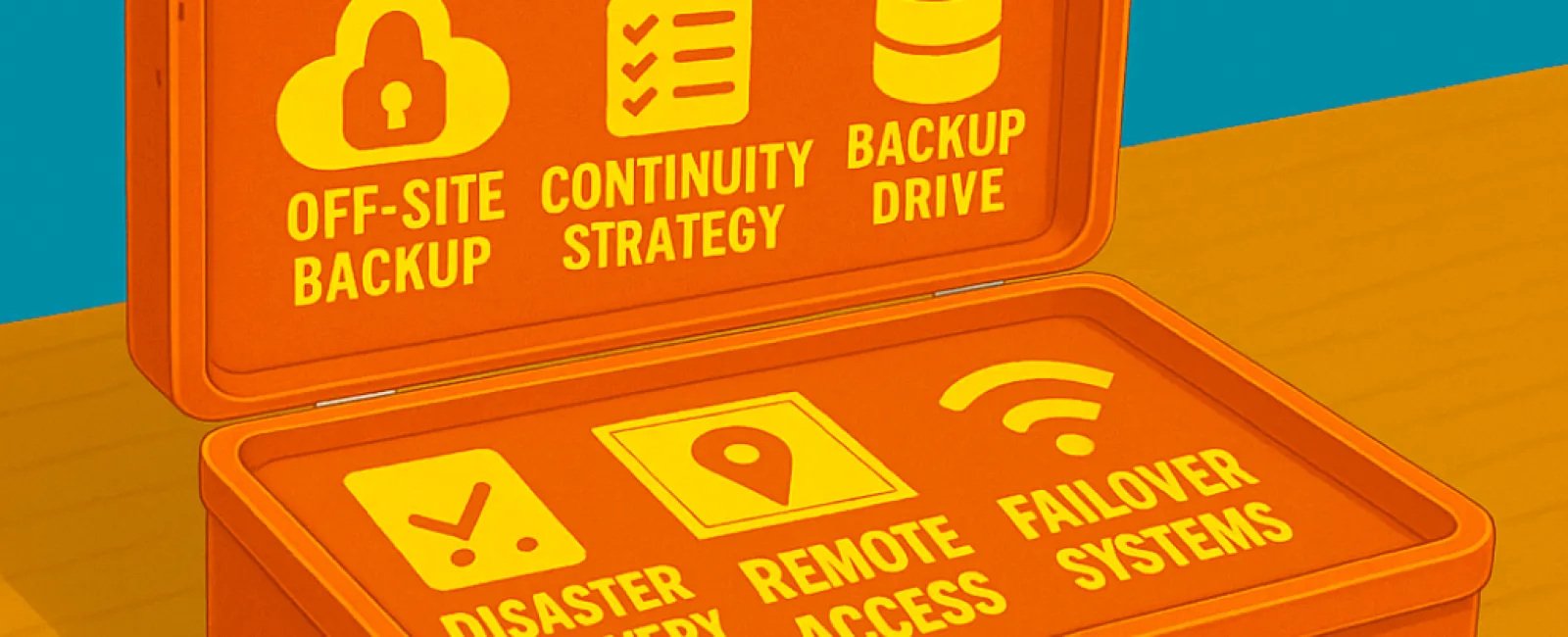July 28, 2025
Unexpected power failures, cyberattacks, hardware malfunctions, and natural calamities strike without warning, often causing severe disruption for small businesses. While many believe that having backups is sufficient, restoring a file alone doesn't guarantee your business stays operational. Without access to critical systems, support for remote work, or clear communication with your team and clients, even brief interruptions can escalate into prolonged setbacks. A dependable IT partner should equip you not just with backups, but with a comprehensive strategy to ensure your business remains fully functional under any circumstance.
Backups Alone Won't Cut It - You Need a Robust Continuity Strategy
Backups are crucial, but they represent only one piece of the puzzle. What your business truly requires is a proactive continuity plan designed to maintain operations through and beyond any major disruption.
When your systems fail, data becomes inaccessible, or your workplace is compromised, relying solely on local backup files offers little relief. Without a swift and clear recovery plan, you risk significant losses in revenue, reputation, and regulatory compliance.
Understanding the Difference: Backups vs. Business Continuity
Many businesses make this critical mistake:
●
Backups enable data restoration.
●
Continuity ensures your business stays operational no matter what.
An effective continuity plan addresses essential questions such as:
●
How quickly can we recover?
●
Where will the team work if the office is inaccessible?
●
Which systems are mission-critical?
●
Who is responsible for activating the recovery plan?
Key components also include:
●
Encrypted, off-site, and immutable backups
●
Prioritized recovery objectives (RTO/RPO)
●
Preparedness for remote work
●
Redundant systems and failover mechanisms
●
Routine disaster simulation drills
If your IT provider cannot confidently guide you through these critical aspects, you are not truly protected — just fortunate until now.
Could This Happen to Your Business?
This is not a scare tactic — these are real-world disasters causing real damage. Recently:
●
Florida hurricanes displaced hundreds of businesses, leaving those without cloud access completely immobilized.
●
North Carolina floods destroyed on-site servers, wiping out months of records and invoices.
●
California wildfires razed entire office buildings in the Pacific Palisades, many lacking off-site recovery solutions.
●
Numerous small businesses struck by ransomware attacks discovered their backups were either corrupted or untested.
Disasters affect businesses of all sizes every day — not just large enterprises.
Essential Questions You Should Be Asking Today
If disaster struck tomorrow, would your business keep running?
Ask your IT provider:
●
How quickly can we recover from a ransomware attack?
●
Are our backups regularly tested, and which systems are covered?
●
What is the recovery plan if a flood or fire disrupts our office?
●
Does our continuity plan comply with industry regulations?
●
Can we continue serving clients if our team must work remotely?
If you can't answer these confidently, your business may already be vulnerable.
Disasters Are Inevitable. Downtime Is Optional.
You can't prevent every outage, storm, or cyberattack, but you can control how your business responds.
A good IT partner helps you recover.
An exceptional one ensures your operations never miss a beat.
Ready to assess your business's readiness?
Click Here or call us at (925) 766-4005 to schedule your FREE 15-Minute Discovery Call and let's protect your business from disaster-induced downtime.





